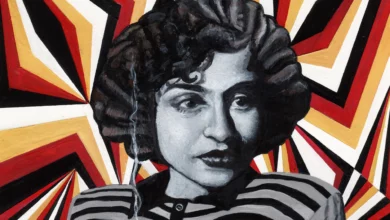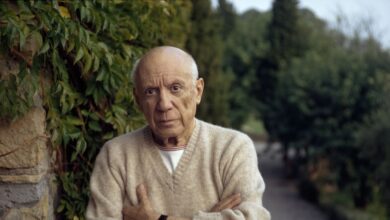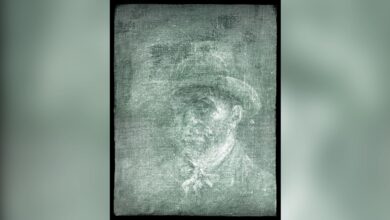Amid the late summer lull, two commercial galleries in Cairo have turned to old favorites to carry them through Ramadan. Tache Art Gallery at Designopolis has assembled its latest show as a presentation of “icons of Egypt’s contemporary art scene,” according to the gallery’s press release. The exhibition, entitled “The Contemporaries,” joins Al Masar Gallery in Zamalek’s similarly titled “Contemporary Views IV: Figurative Practice” in presenting work by some stalwart artists of the local contemporary scene.
The galleries share a theme, and even a couple of artists – sculptor Ahmed Askalany and painter Adel al-Siwi – but Al Masar Gallery, set in a turn-of-the-century mansion off of 26 July Street in Zamalek, puts the hyper-modern, desert suburb location of Tache into stark contrast. The relatively new Tache, which opened on 22 January, has yet to develop a unique identity as a gallery.
“The Contemporaries” is the fourth exhibition to be held at Tache and includes recent works from the painters Mohammed Abla and Nazli Madkour along with Siwi and Askalany. The four are all well-established artists with a long history of exhibiting in Cairo's private galleries. The exhibition does not present any significant changes in the works of these artists, or new voices to the art scene, but is nonetheless a well-rounded display overall. It might take a devoted viewer or serious collector, however, to travel all the way to the Designopolis development on the Cairo-Alexandria Desert road to view the show.
The most recent work included in the exhibition is Abla’s offering, an extensive collection of paintings of Fayoum. Twenty-two works in oil paint on paper, framed in heavy glass and wood, join one large-scale oil painting on canvas in depicting the marshes and unique natural landscape. With an emphasis on color and brush stroke, occasional boats and figures pass through the frame. The works highlight Abla’s swift, neo-impressionist style as he examines changing light and fleeting moments.
Abla, who lives between Fayoum and Cairo, has spent much of the past year developing this series of paintings, and a part of his interest in displaying the beauty of the area stems from the looming fear of increased development that could disrupt the natural environment.
“The exhibition was partly to show how beautiful nature is there, to encourage people to fight against development projects,” says Abla.
Along with Abla’s paintings, Askalany’s sculptures constitute the bulk of the exhibition. The materials Askalany employs are a central element of his work, connecting his sculptures to the traditional crafts of his native town of Nagi Hammadi in Upper Egypt, in Qena Governorate. While the style of palm weaving typically employed in basket-making has played an important role in much of Askalany’s previous work, the current pieces are made of a synthetic clay mixture painted dark brown with an earthy texture.
The sculptures are bodies without heads, most one to two feet in height, with ample bellies and thighs. They engage in simple activities: resting, playing with children, dreaming. The impression is one of a simple life where physicality and emotion rule, and intellectual activities are left behind, presenting what appears to be a somewhat idealized interpretation of rural life. Though Askalany’s new figures do not maintain the mysterious quiet of his previous palm-wrapped work, he continues to actively explore his own background through unique materials and forms.
Along with the work of Abla and Askalany, the show includes two paintings by Siwi and a collection of paintings by Madkour.
Siwi’s paintings are a continuation of a project the artist displayed at the Mohamed Mahmoud Khalil Museum in 2009, emphasizing narrative pictures over portraiture.
Madkour’s deep blue and green paintings depict shadowy women and floral motifs, highlighting her signature style.
Tache Gallery is still in the process of developing its own voice, and it will be interesting to see whether it distinguishes itself from Cairo’s other commercial offerings. The gallery kicked off with a retrospective exhibition for artist Huda Lutfi in January, and with this crop of work has stuck to a safe program of sculpture and painting by established artists. Still, there are beautiful works on display, and it is interesting to note that Al Masar Gallery selected slightly more commercial works from Askalany and Siwi, opting for a bronze work by Askalany and examples of Siwi’s well-known portraits of Egyptian cultural icons.
“The Contemporaries” will be on display until 10 September at Tache Art Gallery, S-139 Sahara District, Designopolis, Km 38 Cairo- Alexandria Road, 10 am-10 pm daily.
“Contemporary Views IV: Figurative Practice” is open until 25 September at Al Masar Gallery, Baehler's Mansion 157 b. 26 July St., Ground Floor, Zamalek, Cairo, from 11 am-9 pm Saturday-Thursday, and Fridays by appointment.




